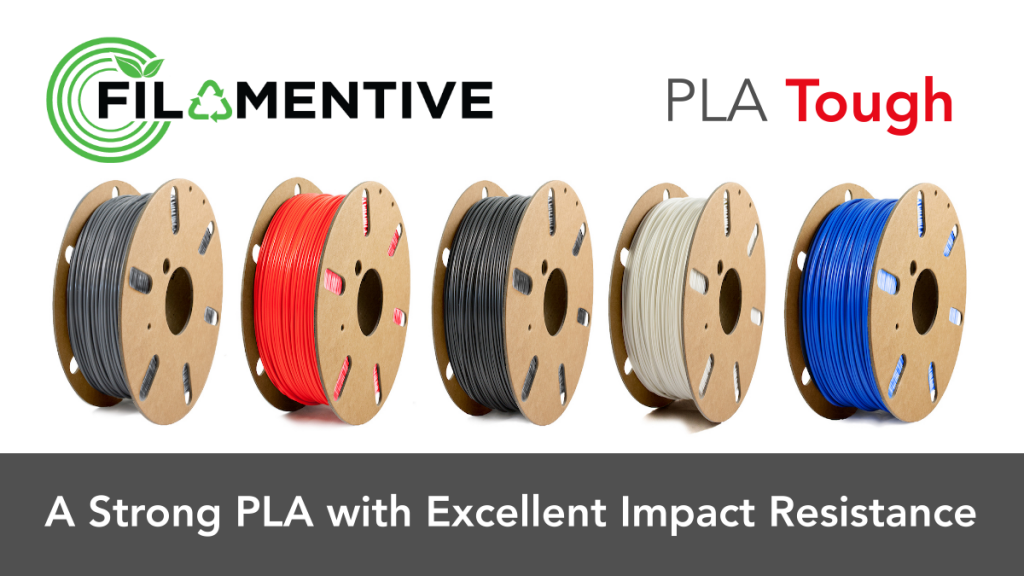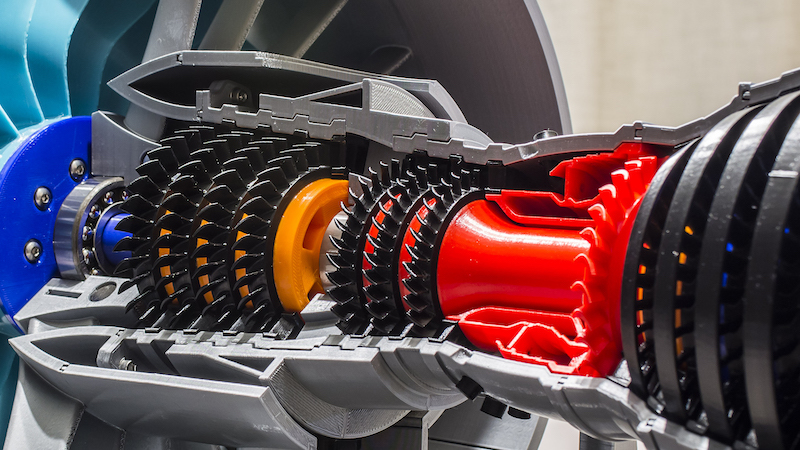The nominations for the 2021 3D Printing Industry Awards are now open. Who do you think should make the shortlists for this year’s show? Tell us now before this week’s deadline.
UK-based 3D printing filament developer Filamentive has announced the launch of its new PLA Tough material.
Marketed as an industrial-grade offering, PLA Tough is designed to combine the impact strength of ABS with the ease-of-printability and environmental benefits of PLA. In fact, according to Filamentive, the company’s new filament offers an impact resistance more than 750% greater than regular PLA (29.8 kJ/m² versus 3.4 kJ/m²), all while retaining its biodegradability (albeit in an industrial composting plant).
Ravi Toor, Founder & Managing Director of Filamentive, states, “Whilst ABS and other engineering-grade polymers certainly have their place within 3D printing, the launch of PLA Tough meets the demand for an industrial-grade material that is easy to 3D print but also bio-based – enabling industrial 3D printing to be more sustainable, without compromising performance.”

The demand for strength and sustainability
Looking at the 2021 Sculpteo State of 3D Printing Report, 72% of the users surveyed said that strength was the most important property they looked for in a 3D printing material. The sentiment suggests that the applications of 3D printing are moving beyond the realm of prototyping and into end-use production, with FFF in particular increasingly being used for manufacturing aids and tooling.
Additionally, when asked what the industry as a whole needed in order to grow, 47% of users surveyed said ‘sustainable materials and technologies’, signifying widespread awareness of the environmental impacts of additive manufacturing. The circular economy and bio-based materials are a hot topic at the moment, calling for biodegradable yet high-performance options like PLA Tough.
Filamentive touts sustainability in other areas of its business too, having launched its own ‘Eco Responsible 3D Printing Alliance’ earlier this year. With the aim of driving circular principles across additive manufacturing, the project will see contributors work towards increasing 3D printing’s resource efficiency, ensuring lower manufacturing emissions and minimizing the amount of plastic being sent to landfills.

PLA Tough filament
Intended to address the market demand for both strength and sustainability, Filamentive’s new PLA Tough has already exhibited excellent performance in a high strain-rate test as per ISO 179. The filament’s impact resistance was found to be comparable to that of ABS, placing it several levels above standard PLA and even PLA+.
In line with the firm’s sustainability goals, the new material is also sold with 100% recyclable cardboard spools rather than conventional polymer reels. Additionally, since PLA Tough is inherently more wear-resistant than standard PLA, it’s more suitable for long-term applications. This extends the life cycle of the 3D printed parts and ultimately reduces overall material consumption and energy usage. Filamentive’s recommended list of applications includes tooling, jigs & fixtures, manufacturing aids, and functional prototypes.
PLA Tough is currently available in five colors: black, white, grey, blue, and red, as well as in both 1.75mm and 2.85mm diameters.
Earlier this year, 3D printing materials company Polymaker also launched an environmentally-conscious PLA-based filament for 3D printing – PolyTerra PLA. The material was developed to be tougher with less of an environmental impact than standard PLA, and also includes organic material additives.
Elsewhere, engineers at McGill University and Ryerson University recently managed to turn environmentally damaging wind turbine waste into a robust new PLA-based filament. Using a mixture of mechanical grinding and pyrolysis, the team recycled a defunct wind turbine blade into a fine fiber powder, which showed higher strength and stiffness than virgin fiberglass when integrated into a PLA matrix.
Subscribe to the 3D Printing Industry newsletter for the latest news in additive manufacturing. You can also stay connected by following us on Twitter, liking us on Facebook, and tuning into the 3D Printing Industry YouTube Channel.
Looking for a career in additive manufacturing? Visit 3D Printing Jobs for a selection of roles in the industry.
Featured image shows a Rolls-Royce jet engine model 3D printed in PLA Tough. Photo via Filamentive.



